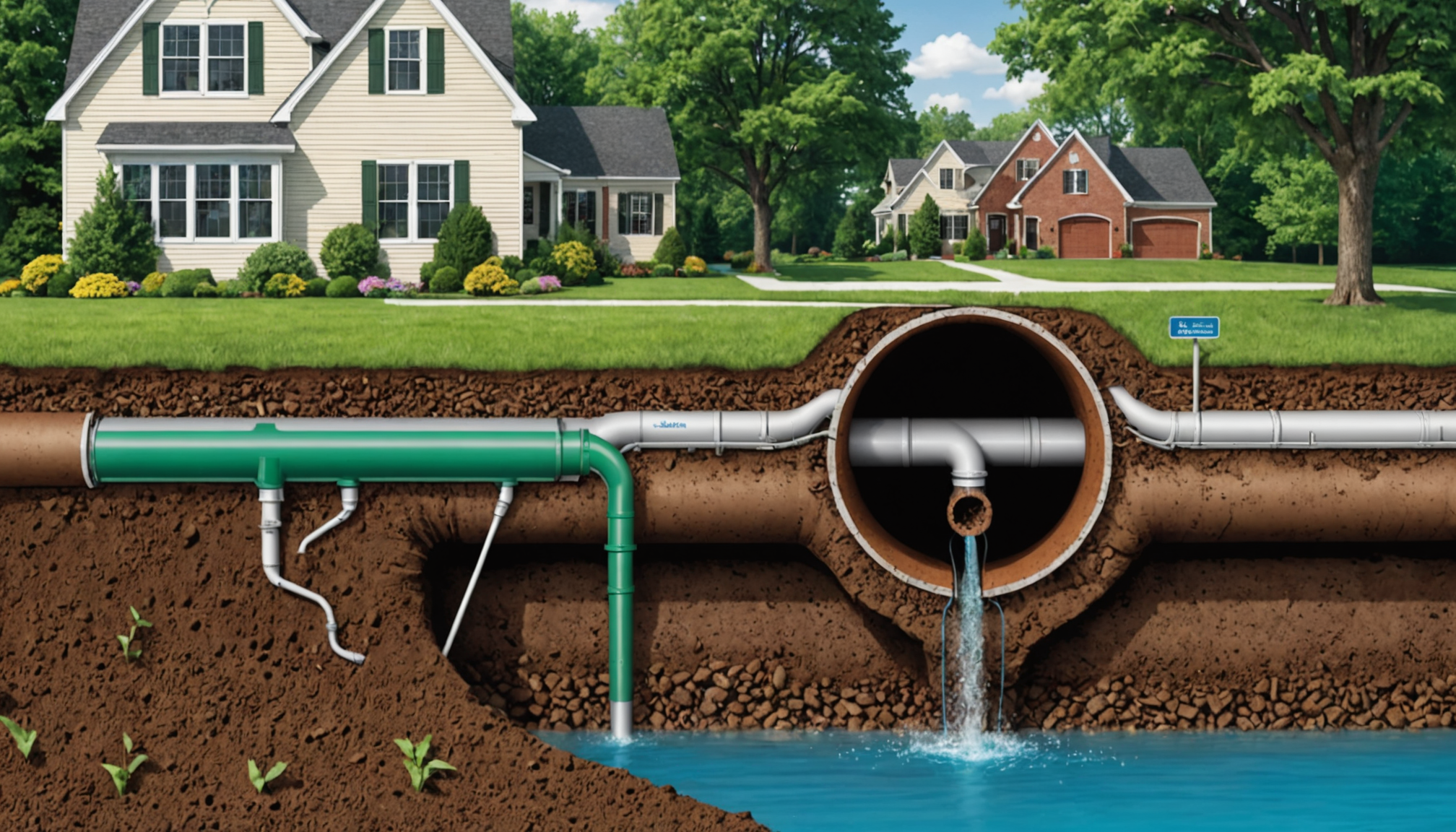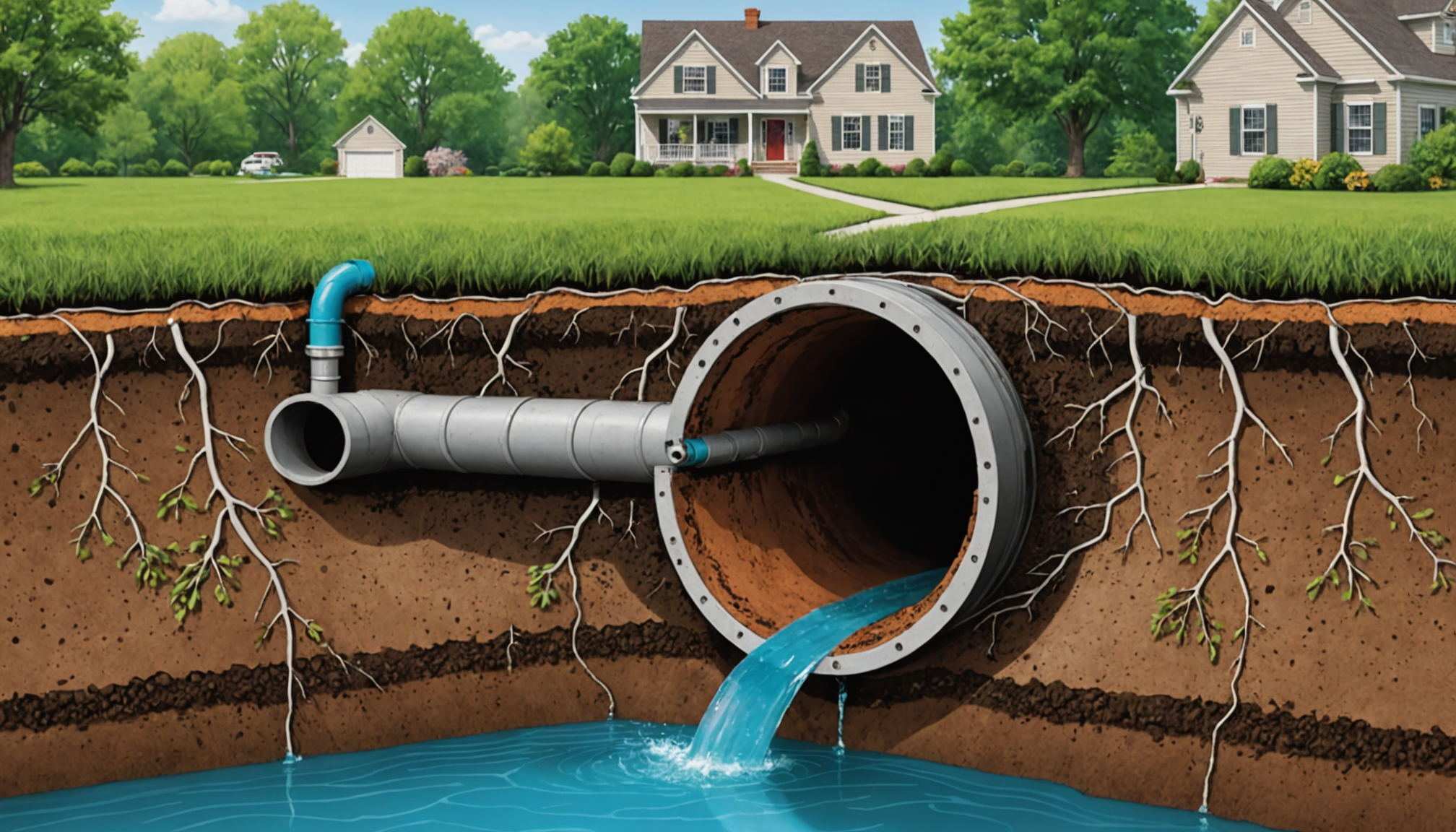For many homeowners in St. Louis, dealing with sewer laterals may not top the list of priorities. However, understanding your responsibilities regarding these essential underground structures is crucial. Sewer laterals are the underground pipes that connect a home’s plumbing system to the main sewer line, typically maintained by local municipalities. In many instances, homeowners are responsible for the portion of the sewer lateral that runs from their dwelling to the city’s sewer line.
Having a clear grasp of these responsibilities helps prevent potential headaches. Imagine a sewer lateral as the superhighway for waste, transporting everything from dishwater to shower runoff smoothly to the main sewer line. If this crucial path becomes blocked or damaged, not only can it lead to unpleasant plumbing issues, but it may also require costly repairs. Recognizing which segments you, as a homeowner, are responsible for maintaining ensures you’re prepared to act quickly when issues arise.
In St. Louis, like in many other cities, the homeowner typically bears the responsibility for repairs and maintenance of the sewer lateral from their house up to the point where it connects with the main sewer line. This means regular inspection and upkeep are key to avoiding disruptions. Understanding your obligations also emphasizes the importance of securing the right insurance coverage and considering financial assistance options to mitigate unforeseen expenses. Knowledge is power, and knowing what is in your purview can heavily influence your approach to handling sewer-related challenges.
Identifying common sewer lateral issues
Sewer laterals, being out of sight, remain out of mind for many St. Louis homeowners until issues arise. Recognizing common sewer lateral problems early can save you from extensive damage and costly repairs. One of the most prevalent issues is blockages caused by things like tree root intrusion. Roots naturally seek out moisture, and once they find a crack in sewer lines, they can penetrate and expand within, causing significant blockages. Regular inspections and maintenance are pivotal to catching such problems early.
Another common issue is the accumulation of materials that shouldn’t be flushed or poured down drains, such as grease, sanitary products, or food particles. Over time, these materials can build up and restrict the flow within the sewer lateral, leading to back-ups and potential overflow in your home. Additionally, older homes in St. Louis might encounter deteriorating pipe material, which can lead to corrosion, ultimately compromising the structural integrity of the sewer lateral.
Frequent incidences of slow drains, gurgling sounds, and unpleasant odors can all be indicators of underlying sewer lateral problems. Being proactive and attentive to these signs will help in diagnosing issues early, allowing for timely intervention. Fortunately, technology has made it easier to diagnose these problems without invasive digging, such as through the use of camera inspections which offer a clear view of the inside of your pipes.
- Regular inspections and maintenance are crucial in preventing sewer lateral blockages, especially from tree roots.
- Avoid flushing or pouring inappropriate materials down your drains to prevent build-ups that can lead to blockages.
- Pay attention to early warning signs like slow drains and unpleasant odors, which can indicate sewer lateral issues.
- For older homes, be aware of potential corrosion in sewer laterals and seek timely interventions.
- Consider using modern diagnostic tools such as camera inspections to efficiently identify and address sewer lateral issues.
Steps to address sewer lateral blockages
Addressing sewer lateral blockages requires a systematic approach to ensure the problem is effectively resolved without causing additional issues. One common mistake is attempting to clear blockages with improper tools or techniques, such as using chemical drain cleaners or makeshift tools. These methods can damage the pipes and, in the case of chemicals, potentially harm your plumbing and the environment. Instead, opt for plumbing snakes or augers designed for such tasks, and if you’re uncertain, seeking professional help is often the best course of action.
Another frequent error is neglecting to perform a proper diagnosis before diving into remediation efforts. hasty actions might result in temporary relief without addressing the underlying cause. In St. Louis, utilizing technology like camera inspections can provide a clear visual assessment of the sewer lateral’s interior, helping identify not just blockages but potential structural issues. This comprehensive understanding prevents unnecessary damage from incorrect treatments and ensures the right solution is applied from the start.
Homeowners sometimes overlook routine maintenance, which can lead to repeated issues. Avoid this pitfall by scheduling regular inspections of your sewer lateral. This proactive measure helps in early detection of possible blockages, particularly those caused by tree roots or accumulated debris. Regular maintenance sessions not only minimize future blockage risks but also extend the lifespan of your plumbing system, saving both money and headaches in the long run.
When addressing blockages, ensure that temporary fixes do not replace necessary permanent solutions. For example, if tree roots are constantly infiltrating your lines, consider more durable solutions like pipe lining or root barriers, instead of just clearing the immediate blockage. This comprehensive approach ensures long-term effectiveness and helps maintain a smooth-running sewer system.
Lastly, be cautious of relying solely on quick fixes or do-it-yourself methods without proper knowledge or equipment. While it might seem economical initially, this approach can escalate problems, leading to more extensive damage and costly repairs. Engaging trained professionals who understand the intricacies of St. Louis’s sewage systems can provide peace of mind and effective results.
Navigating sewer lateral repairs and replacements
When dealing with sewer lateral repairs and replacements, it’s essential to have a clear plan of action to navigate these often complex projects effectively. The primary consideration is to determine whether a repair or complete replacement is necessary. Figuring this out requires a thorough assessment, typically conducted by experienced professionals with the right tools to diagnose the issue accurately, such as camera inspections which provide valuable visuals of the problem’s extent.
It’s important to consider the age and material of the sewer lateral system. Older St. Louis homes might have laterals made from materials that have aged significantly and are prone to high levels of degradation, such as clay or cast iron. In such cases, opting for a full replacement might be more cost-effective in the long run, rather than conducting repeated repairs that only serve as temporary solutions. Conversely, newer systems with minor damages may benefit from targeted repairs, like pipe relining or sectional replacements, minimizing the disruption and expense.
Another critical factor is choosing the right professionals for the job. Sewer lateral issues are intricate, and engaging a qualified and licensed plumber ensures that the chosen solution addresses the problem effectively. The right professional will have a comprehensive understanding of St. Louis’s local regulations and will know what’s permitted in terms of repairs and replacements. Make sure to get quotes from multiple service providers to compare methodologies, costs, and timelines. Prioritize those who offer transparent estimates and a clear breakdown of their processes.
Financial considerations cannot be ignored when planning such substantial projects. It’s wise to explore your options thoroughly, from using homeowner’s insurance in cases where damage is covered to considering city programs that might offer subsidies or assistance. Being informed enables you to make decisions that align with both your circumstances and budget.
After repairing or replacing the sewer lateral, prioritizing regular sewer maintenance will help prevent future problems. Routine checks can quickly identify any new issues, helping avert potentially costly repairs down the line. While these might seem like additional expenses, consistent maintenance saves homeowners money over time by prolonging the life of the pipes and avoiding significant disruptions.
Ultimately, while navigating sewer lateral repairs and replacements may seem daunting, a proactive approach combined with the right help will ensure a seamless experience. By staying informed, reaching out for expert guidance, and wisely investing in preventative maintenance, you can safeguard your home’s plumbing health and ensure reliability throughout the years. Embrace this journey not just as a challenge to overcome but as an opportunity to reinforce the foundation of your home, allowing peace of mind that your sewer lateral will function efficiently and effectively, safeguarding your property and investment for the future.
Exploring financial assistance for sewer lateral maintenance
- What exactly is a sewer lateral?
- A sewer lateral is the pipe that connects a home’s plumbing system to the main sewer line, typically maintained by municipalities. In St. Louis, homeowners are generally responsible for the section of the sewer lateral that extends from their property to the connection with the city’s main sewer line.
- How can I tell if there’s a problem with my sewer lateral?
- Common signs of sewer lateral issues include slow drainage, gurgling noises in the plumbing, and unpleasant odors. Regular inspections can help detect these problems early, preventing more severe blockages or damage.
- What should I do if my sewer lateral is blocked?
- If you suspect a blockage, avoid using chemical drain cleaners and makeshift solutions, as they can further damage your pipes. Contacting a professional plumber for an accurate diagnosis and appropriate resolution is often the best approach.
- Are there any financial assistance options available for sewer lateral repairs in St. Louis?
- Yes, some municipalities offer financial assistance or subsidy programs to help with sewer lateral repairs. It’s advisable to check with local agencies or reach out to your city’s public works department for available programs.
- Do I need special insurance for sewer lateral issues?
- Yes, it’s wise to have insurance coverage that includes sewer lateral issues as standard homeowners insurance might not cover such problems. Review your policy or consult with your insurance agent to ensure you have the appropriate coverage for potential sewer and plumbing issues.

